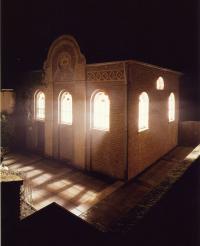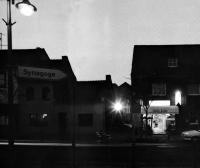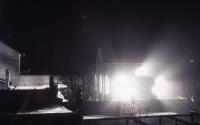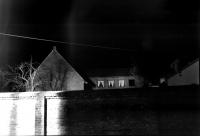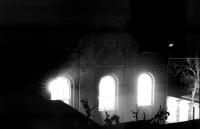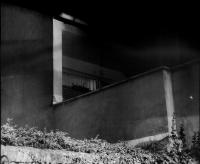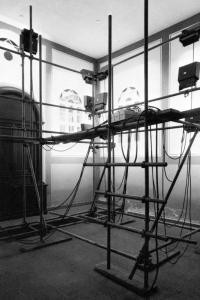The installation attains an abysmal pointedness through the artist’s use of a means that became synonymous with the aestheticisation of force through the “light domes” Albert Speer created during the Third Reich. But it goes without saying and without calling for comment that Kuball takes a radically different approach and has diametrically opposed intentions. Neither vertically pooled nor aimed parallel into the sky, light as it is used here does not lend itself to a misinterpretation as glorification of power.Quite on the contrary: With its more or less horizontal alignment, its refraction and deflection, it serves the purpose of enlightenment and mental penetration.
Kuball’s piece is realised for a lifetime of mere weeks. Contrary to appearance, it is precisely the fleeting character of the artwork or the fact that refraction house will leave no material substrate of timber, stone, or steel that might end up God knows where, and that might be recycled as a commodity, implies the chance that the installation might survive as a geographically specific artwork in tomorrow’s past, even if only as photographic evidence, materially speaking. For Kuball, resistance against visual entropy, and the work of history crystallise not in stable forms of traditional genres, least of all here where a dialogue with an existing monument and memorial is at issue. It is not semantic redundancy, emotional intensification or aesthetic comment on those moments of grief and remorse, admonition and commemoration inscribed in the synagogue are what the artist has in mind, but the expansion of a message of despair and hope that coincides with a materialisation and intellectual appropriation. Rather than turning toward the inside, as did, each in his own way, Kounellis, Serra and Baselitz by choosing museal forms of representation, this installation marks a decisive step outside without offering any surface-level update. The most ephemeral of mediums available to the figurative arts is used in this case to try to integrate into the built-up and lived-in neighbourhood the restored, if admittedly secularised, Jewish place of worship which survived the Nazis’ persecution because it had already fallen out of use and served different purposes at the time. The refracted light moves the down-to-earth ambience of the location into a perspective that connects it with history,

